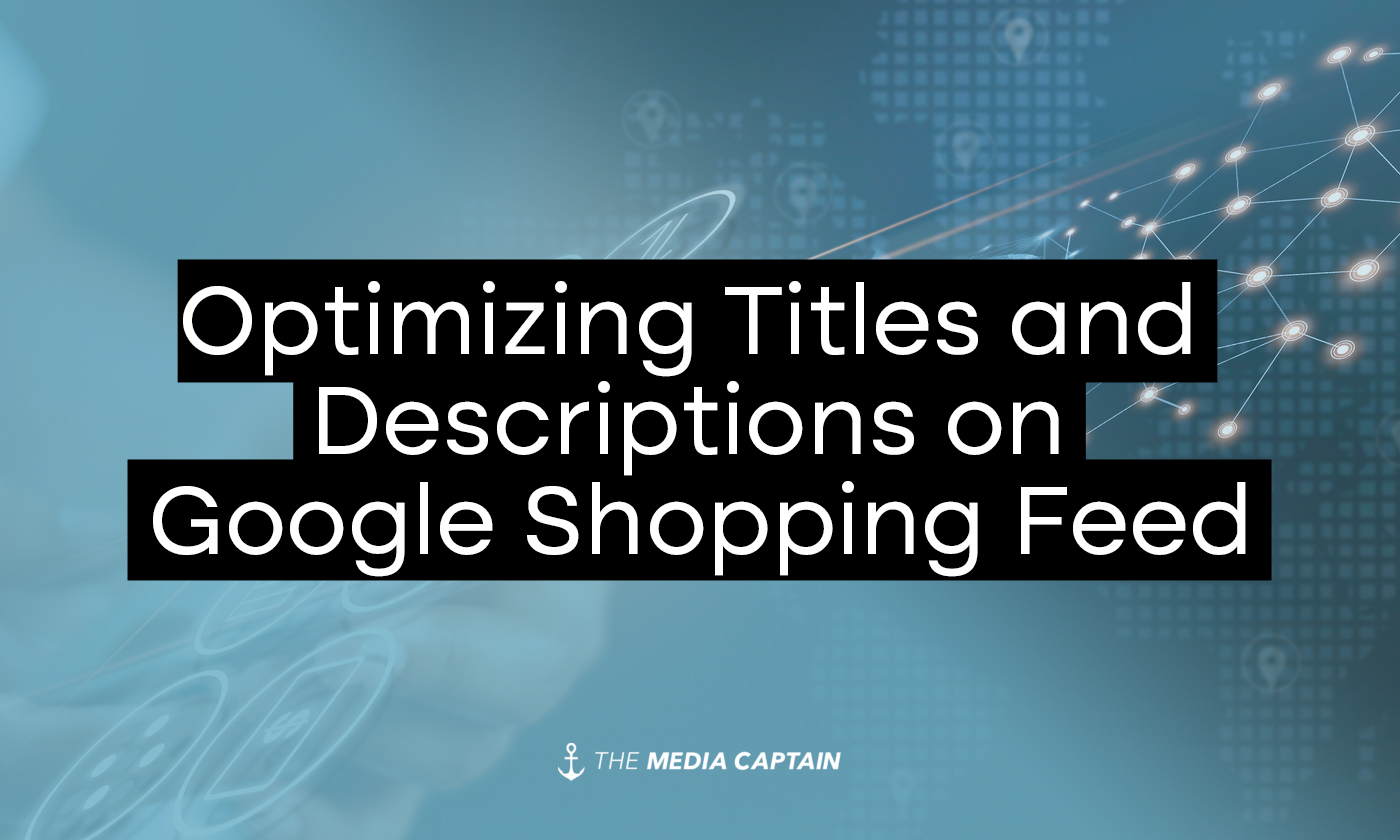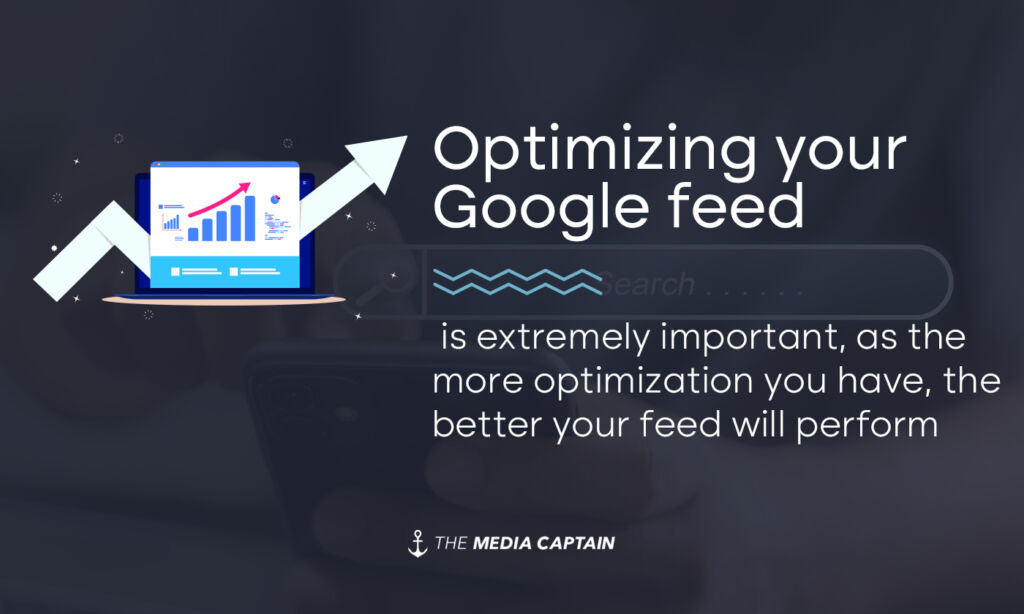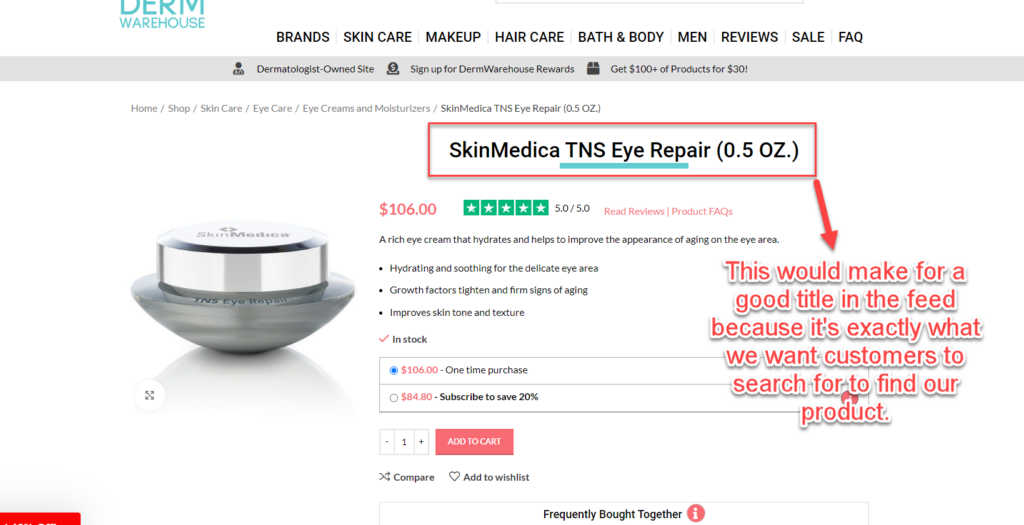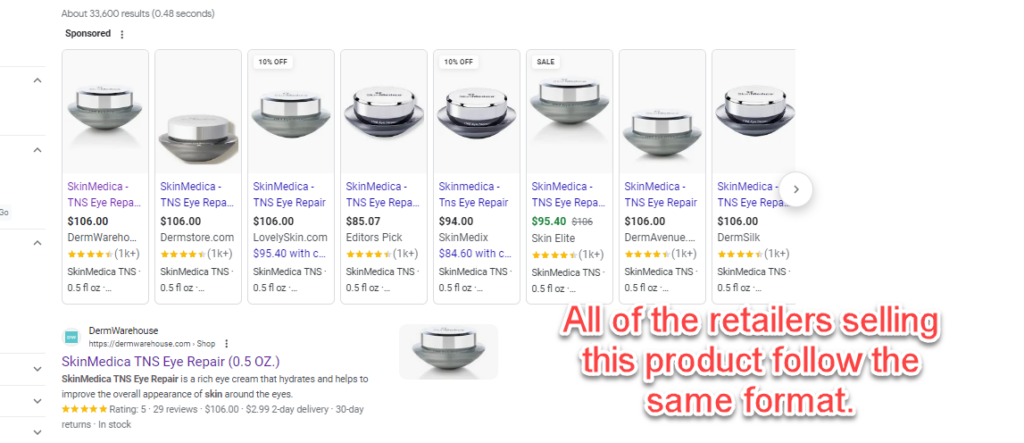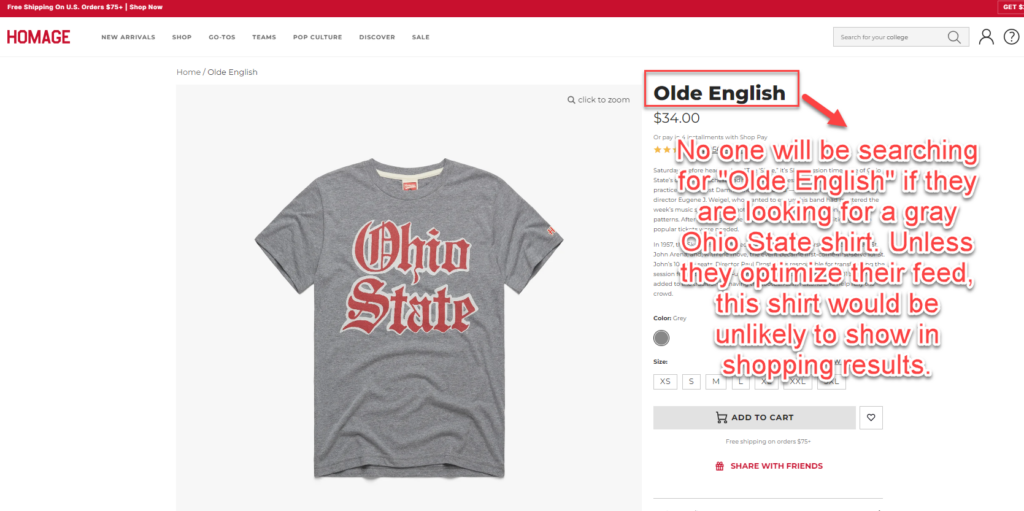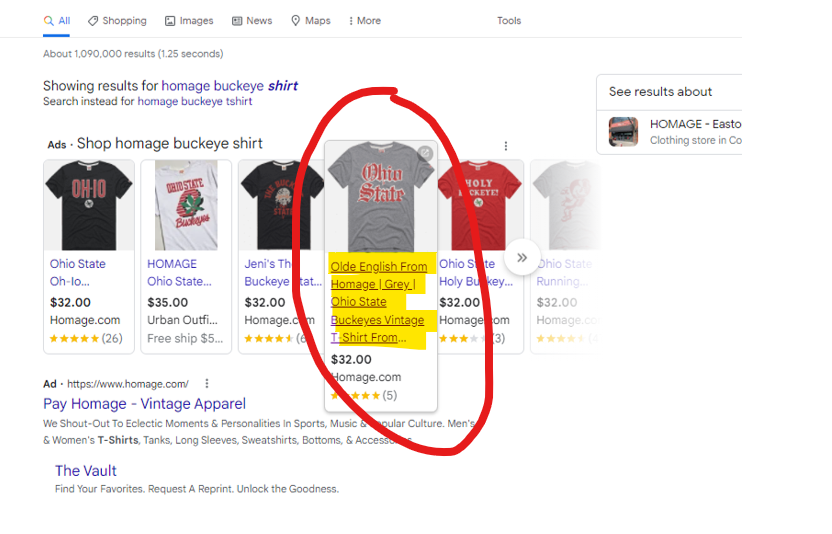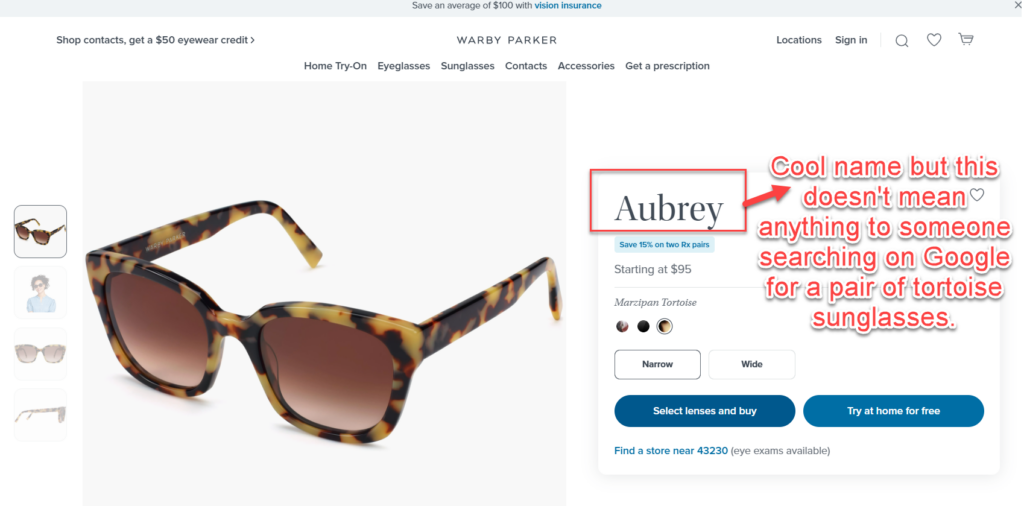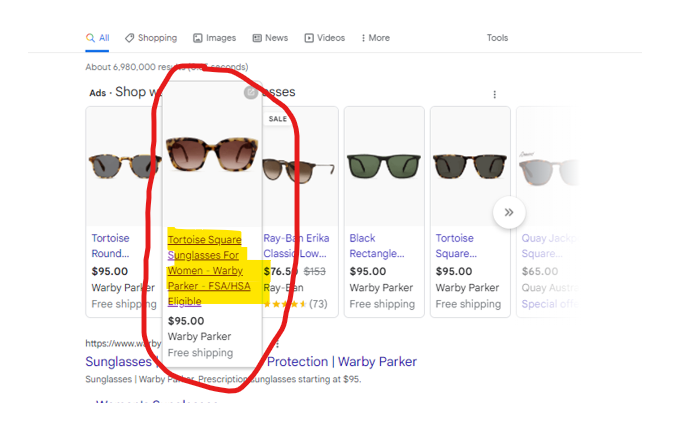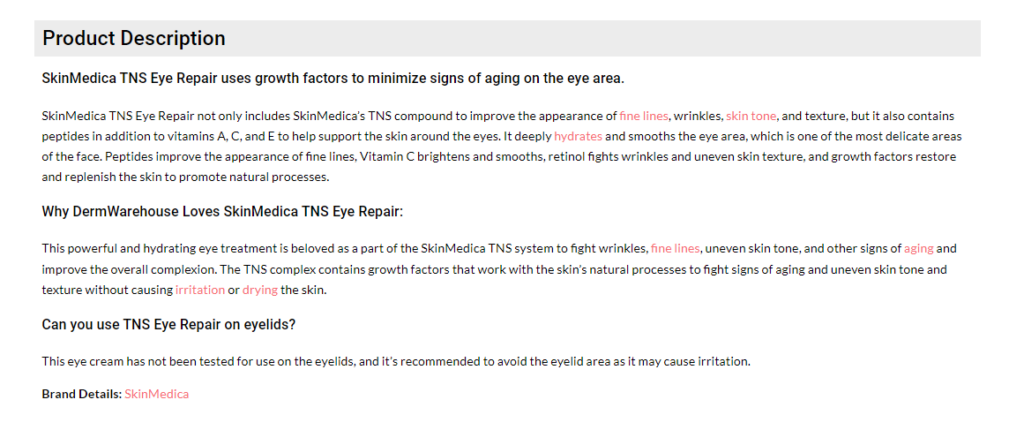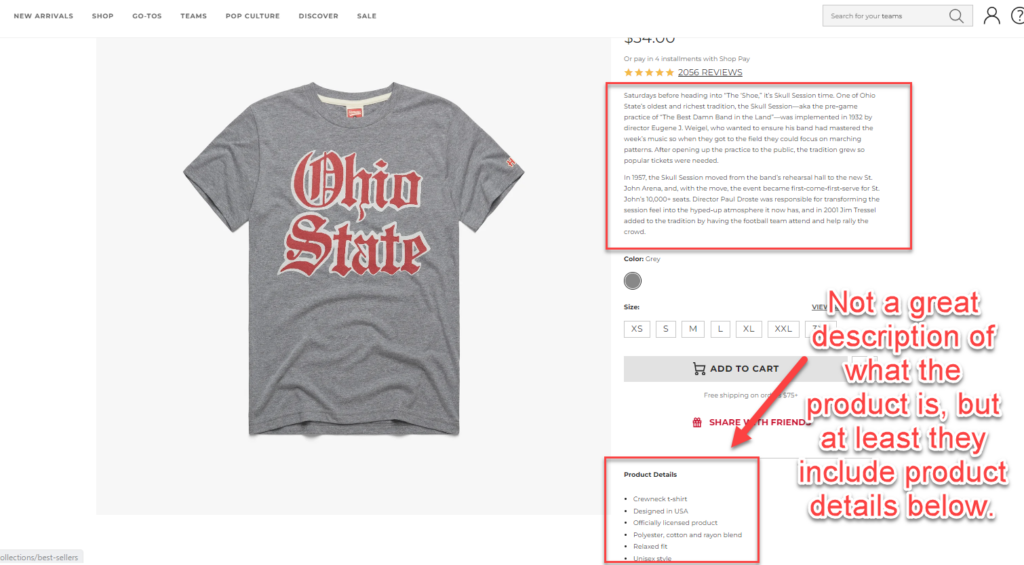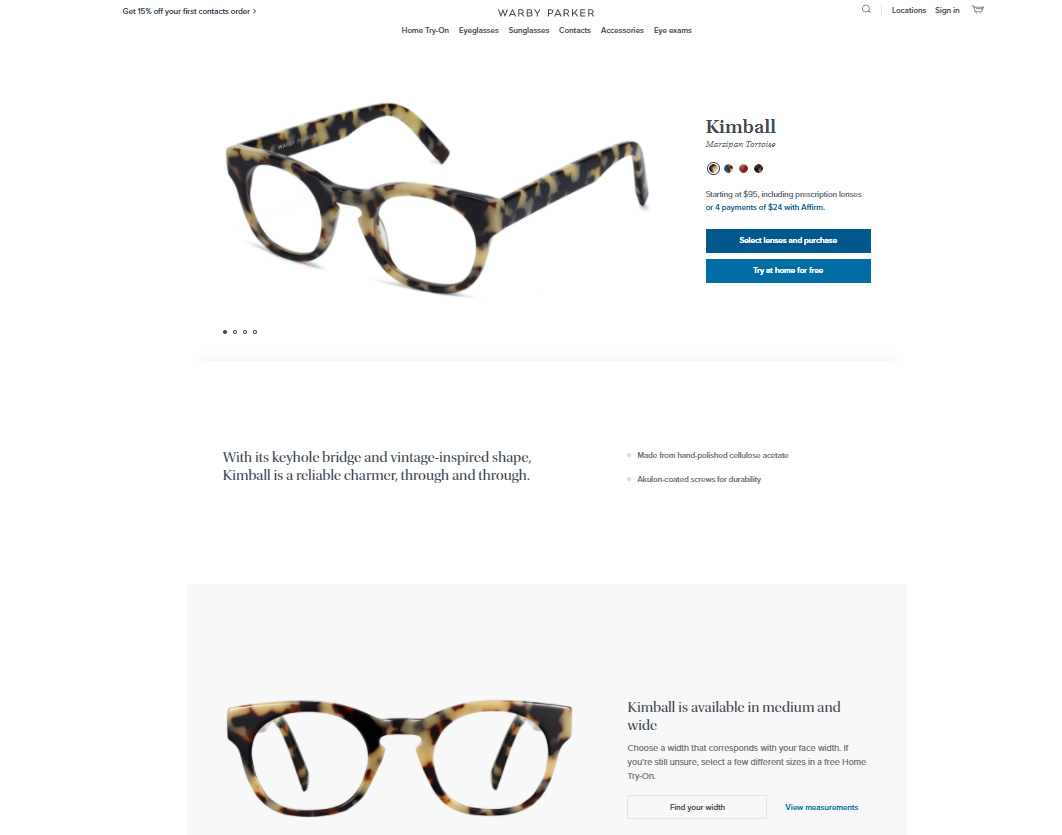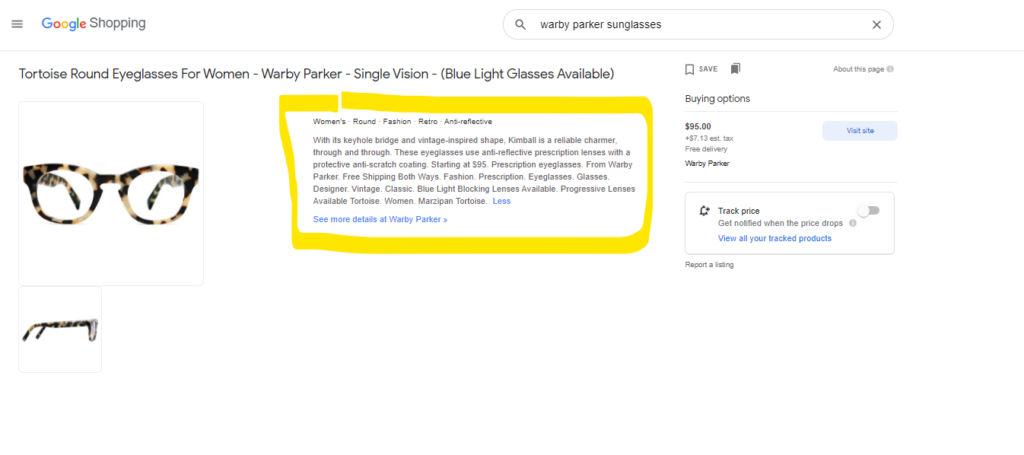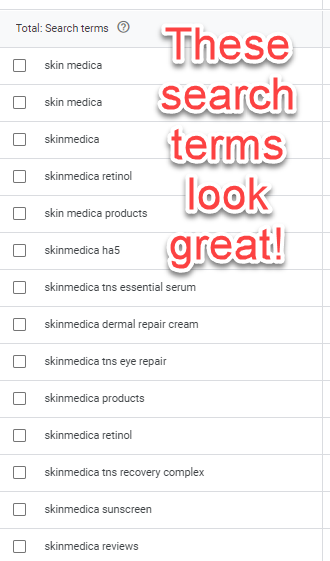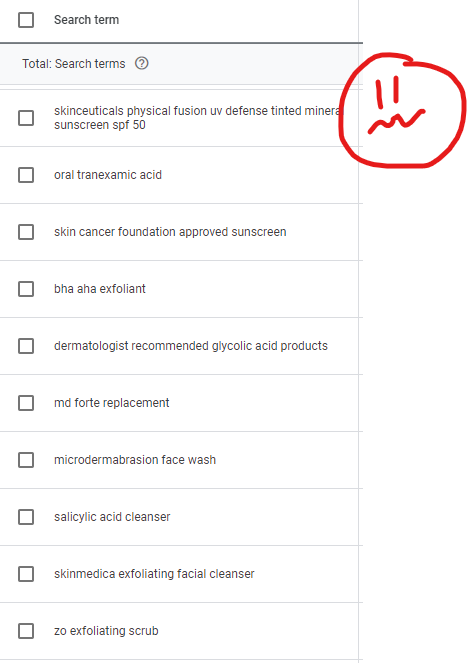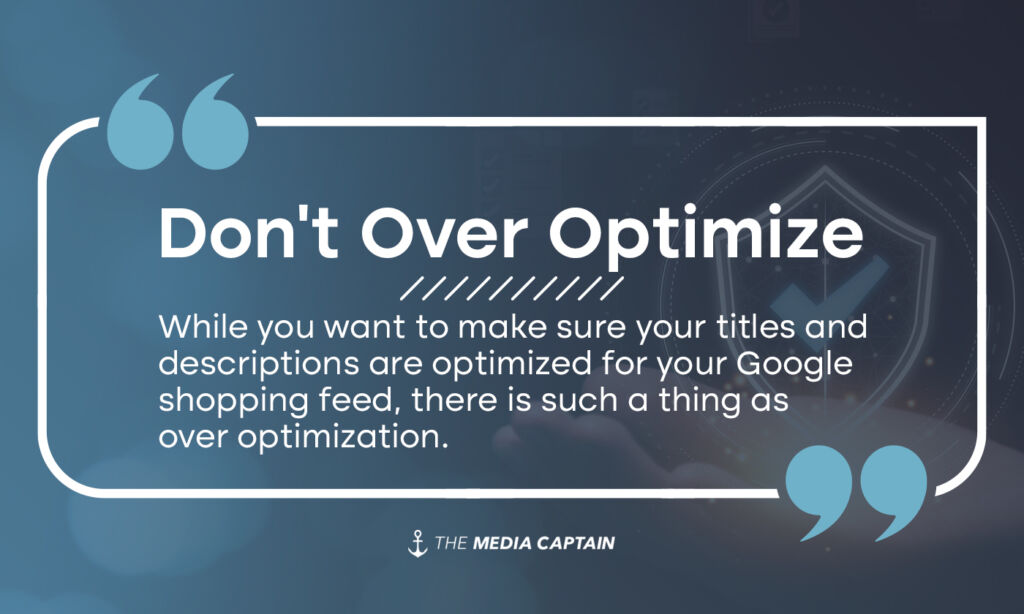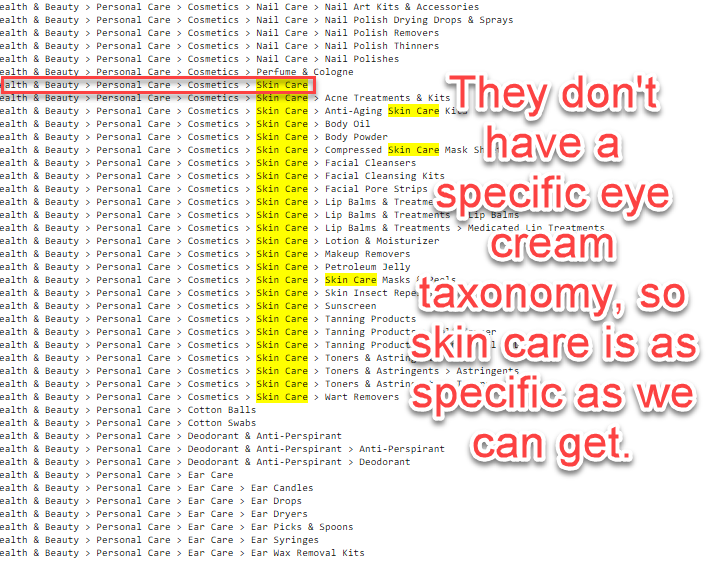When it comes to your Google Shopping performance, the title and description of your products are keys to success. These are also two extremely easy areas of optimization in your Google Shopping Feed. Many people don’t realize that generic titles can lead to lackluster traffic. When you add better titles and descriptions, your search traffic from Google Shopping will improve.
We work with many eCommerce clients and run our own in-house eCommerce company, so when it comes to the Google Shopping Feed, we have vast experience. We’ve experimented with optimizing different aspects of the feed and have found that enhancing titles and descriptions within the feed is easy to do and can pay high dividends.
I will explain to help you better understand what a Google Shopping Feed is about and how optimized titles and descriptions can improve performance. I will then walk you through examples of brands that are doing great with the optimization of titles and descriptions within Google Shopping and ones that aren’t. Between the examples plus my explanations, you should be ready to improve your eCommerce ROAS!
Need help optimizing your Google shopping feed? Contact The Media Captain!
Table of Contents
- 1 What is a Google Shopping feed
- 2 Why do I need to optimize my Google shopping feed?
- 3 Examples of how to optimize your title in your Google shopping feed
- 4 Examples of how to optimize your description in your Google shopping feed
- 5 The benefits of good optimization
- 6 Don’t Over Optimize YOUR FEED
- 7 Other Feed Optimizations
- 8 In Closing
What is a Google Shopping feed
According to Google, “a feed is a file that contains a list of products you want to advertise through Merchant Center. When you add your products, you’ll assign attributes to each one. Your product feeds will use these attributes to group your products. Once you’ve created a feed, it can be used multiple times across as many Merchant Center features as you need.”
Your Google Shopping Feed, which you’ll upload into Merchant Center, is a list of all of your products that contains titles, descriptions, prices, images, and all other product information. Google uses the feed to pull in your products to Google Shopping.
Learn More: What You Need to Know About Google Merchant Center
Why do I need to optimize my Google shopping feed?
As you continue to make optimizations to your feed, you should see your performance improve. Titles and descriptions within your feed should reflect what potential customers will search for on Google and be as relevant and concise as possible.
Learn More: How to Optimize Google Shopping Ads for a Better ROAS
On your website, content should be optimized for your customers. You want your titles and descriptions on product pages to contain a plethora of helpful information and flow in a way that makes them readable and intuitive. You always want your customer and the customer journey to be top of mind when creating website content. This will help increase conversion rate on your site (and it’s important for Google).
Think of your shopping feed as data that Google uses to understand who to show your ads to. Being direct, to the point, and including important keywords will ensure that Google won’t have any questions about what it is you’re selling and who your target customer should be.
Since the information on your site is meant for your customers and the information in the feed is meant for Google, they don’t need to align 100%. The title and description don’t need to be the same in both places, and in many instances, they shouldn’t be.
Learn More: How to Optimize Your eCommerce Product Pages for SEO
Examples of how to optimize your title in your Google shopping feed
Skin Care Products from DermWarehouse
For DermWarehouse, our in-house eCommerce brand, the skin care brands we sell already have high awareness. Most of our customers are searching for an exact product and brand on Google when they find us.
For example, one of our popular products is SkinMedica TNS Eye Repair. This is the product name on our site and would make for a good title within our Google shopping feed as well. The reason these could be the same is because we convert really well when people are searching for the exact product name on Google. There’s no fluff or extra information in the title, so this would work in the feed as well. Google will know to show our ads to people who are typing the product name into the search engine.
You can see in the image below that when searching for this product on Google, all of the other sellers are structuring the title in their feed in the same way. We could add something in our feed to mention that the product is for crow’s feet and dark circles; however, this would likely bring in shoppers who are more in the research phase of shopping and aren’t sure what they want yet. By limiting the title to just the product name, we get more searches for the exact product name, meaning more searches from people who know exactly what they want to buy.
T-Shirts from Homage
Homage is a Columbus-based t-shirt company and they do a great job of optimizing the titles on their Google shopping feed. As you can see in the example below, they have an Ohio State t-shirt on their website which is called “Olde English.”
The t-shirt’s name on the Homage website doesn’t give us any information about what the shirt looks like, the material, the fit, etc. No one would be searching for Olde English on Google if they were looking for a gray Ohio State t-shirt. This means that if they didn’t optimize their feed, no one would be able to find this product within the shopping results.
Homage took this into account when they set up their Google shopping feed. They optimized their titles to give more information about what this product actually is, as you can see in the image below. They optimized their title to say “Olde English From Homage | Grey | Ohio State Buckeyes Vintage T-Shirt from Homage.” This title includes the product name, but also the color and a great description of what the product is.
Sunglasses from Warby Parker
Here’s another similar example from Warby Parker. On their website, they have a pair of sunglasses called “Aubrey.” While that name sounds cool, it means nothing to someone searching on Google for a pair of sunglasses.
Warby Parker knew that no one would be able to find this cute pair of sunglasses if they left their title as “Aubrey” in their Google shopping feed. So, they optimized their title in their feed to “Tortise Square Sunglasses for Women – Warby Parker – FSA/HSA Eligible.” Notice that they didn’t even include the name Aubrey anywhere in their feed title.
Examples of how to optimize your description in your Google shopping feed
It may not seem as obvious as to why the description in your Google shopping feed needs optimization, in addition to the title. The reason is that you want a very clear and concise description to ensure you get the most relevant searches related to your products. The description gives Google more insight into what the product is, what it does, and who may want to purchase it.
DermWarehouse – What We Do
Our product descriptions on the DermWarehouse site are long and give as much information about the product as possible. This makes sense on our website because we want to answer all of our customers’ potential questions about the product directly on the site. We go through key ingredients, product benefits, frequently asked questions and more. While this is great from a user experience perspective, there’s a lot of additional information that wouldn’t make sense to include in our feed. For example, we try to eliminate any ingredients from our feed description, because we don’t want people searching for information about a specific ingredient seeing an ad for one of our products. This type of search doesn’t convert well for us and we end up getting a lot of garbage search terms.
Here’s our product description on our site for the SkinMedica TNS Eye Repair:
Since this description is very long and detailed, we would shorten this up for our product feed to say the following:
- “SkinMedica TNS Eye Repair is rich eye cream that hydrates and helps improve crow’s feet around the eyes.”
This description includes the product name, what the product is, what it does, and what concerns it helps with. It’s short and to the point, without any fluff.
Homage – What Not To Do
As you can see in the description on the Homage site, they give a history lesson rather than a real description of what they’re selling. A history buff may love this description, but someone shopping on their site will likely want to know more information about the actual product they may be purchasing.
You can see below on Google shopping that Homage hasn’t optimized their feed description for this product either. The description they use doesn’t say anything about the product itself and should instead give information about the color, the fabric, the fit, etc. They are just pulling the description right off their website, and unfortunately, that description doesn’t mention anything about the product.
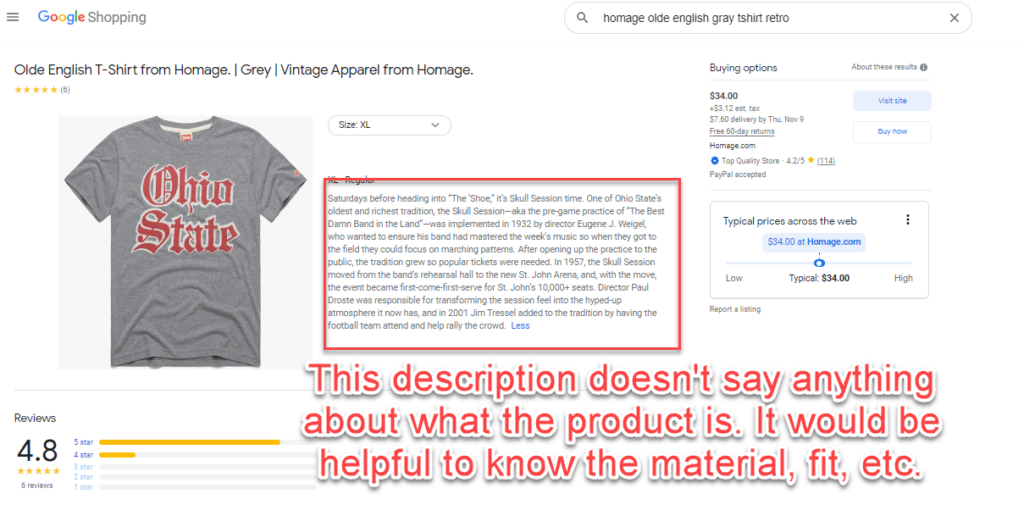 If I were optimizing this description, I would use something like this: “Ohio State Vintage T-shirt | Fitted Ohio State T-shirt in gray | OSU Vintage Apparel From Homage | OSU Olde English gray t-shirt, perfect for game.”
If I were optimizing this description, I would use something like this: “Ohio State Vintage T-shirt | Fitted Ohio State T-shirt in gray | OSU Vintage Apparel From Homage | OSU Olde English gray t-shirt, perfect for game.”
Warby Parker – A Better Example
Warby Parker does a better job optimizing their description for their Google shopping feed. On their site, they have multiple areas for descriptions, meaning it would be unclear where Google should pull the most relevant product information from.
They optimize the description for Google by taking the most important information and putting it all into one concise paragraph. They talk about the shape of the frames, the lenses, the price, and they even mention shipping, returns, and other keywords. I’m copying the description below so you can see it clearly.
“With its keyhole bridge and vintage-inspired shape, Kimball is a reliable charmer, through and through. These eyeglasses use anti-reflective prescription lenses with a protective anti-scratch coating. Starting at $95. Prescription eyeglasses. From Warby Parker. Free Shipping Both Ways. Fashion. Prescription. Eyeglasses. Glasses. Designer. Vintage. Classic. Blue Light Blocking Lenses Available. Progressive Lenses Available Tortoise. Women. Marzipan Tortoise.”
They do a nice job of including relevant information so Google knows who to target, but there does seem to be a bit of keyword stuffing going on within their description (more on this below).
The benefits of good optimization
When your feed is doing what it’s supposed to, you will see very relevant search terms within your Google ads account. As you can see in the image below in our SkinMedica shopping campaign, all of the search terms are related to SkinMedica and most of them mention the product names specifically. This is exactly what we want to see.
Here’s what you don’t want to see. These search terms are all over the place. Irrelevant keywords like this are a good sign that you need some further optimization in your feed.
Don’t Over Optimize YOUR FEED
While you want to make sure your titles and descriptions are optimized for your Google shopping feed, there is such a thing as over optimization. “Keyword stuffing refers to the practice of loading a webpage with keywords or numbers in an attempt to manipulate a site’s ranking in Google search results. Often these keywords appear in a list or group, or out of context (not as natural prose).” [source]
Keyword stuffing is never a good thing. You want to make sure any content you write, whether it’s for your website or specifically for your feed, makes sense for anyone who would be reading your site or your title/description. Keyword stuffing is a big no-no in the eyes of Google, so you want to make sure you’re not doing it. If ever in doubt, keep your customer in mind. You always want to optimize the experience for them by making your website and any content as readable and as intuitive as possible. You can’t go wrong if you’re following that rule of thumb.
Other Feed Optimizations
Product Type
In addition to optimizing title and description, you can also add a product type to each of your products. This is another key piece of information that helps Google identify exactly what your product is, so they know who to serve your ads to. For our SkinMedica TNS Eye Repair that we’ve been referencing, the product type would be Eye Cream.
Google Taxonomy
Google Taxonomy helps map and categorize the products in your shopping feed. They have a list of taxonomies that can be used to determine the best fit for your product. As you can see in the list below, they don’t have a specific taxonomy for eye creams, so I would use the skin care taxonomy for our SkinMedica product. This at least lets Google know that the product is in the skin care category, although it doesn’t get more specific than that.
Health & Beauty > Personal Care > Cosmetics > Skin Care
In Closing
- There are many opportunities to optimize your Google shopping feed. Two of the most important are the title and description.
- Optimizing your title and description in the shopping feed will allow you to get the most relevant searches for your products.
- When optimizing both titles and descriptions, make sure to include descriptive information about what you’re selling. You want to include anything that’s pertinent while leaving out the fluff.
- When you optimize your shopping feed properly, the search terms coming in through Google shopping will be very relevant. If your search terms are not relevant, it may be a good sign that your feed needs some work.
- Make sure you don’t over optimize your feed by keyword stuffing. Google really frowns on this so it’s always best to make sure to keep your customers and user experience in mind.
- The more information you can give Google in your feed, the more targeted your searches will be and the better your shopping ads will perform.


